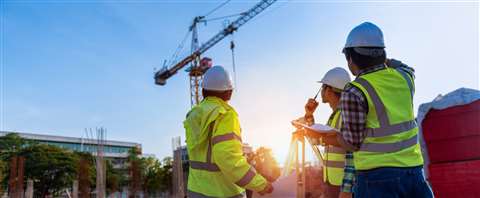Post-disaster toolkit for construction
24 March 2022

The World Green Building Council (WorldGBC) has launched a framework that it says will help communities build with a holistic, inclusive and resilient approach to reconstruction in regions experiencing natural disasters and conflict, especially across the Southern and Eastern Mediterranean.
The ‘Sustainable Reconstruction & Recovery Framework’ is structured around six themes which emphasise that disaster risk reduction, and the sustainable urban reconstruction of the physical environment, can restore the wellbeing of communities, revitalise livelihoods, and support social and cultural life.
Along with the WorldGBC, the report has been put together by the European Bank for Reconstruction & Development (EBRD), UN Habitat, and Green Building Councils in Egypt, Jordan, Lebanon and Palestine.
Cristina Gamboa, CEO, World Green Building Council, said, “As we build momentum to the UN Climate Conference COP27, the priority must be on facilitating knowledge for an equitable transition to sustainable, low-carbon infrastructure solutions that bolster resilience for all communities and economies.
“The Sustainable Reconstruction and Recovery Framework is a toolkit for disaster-hit areas that does just that for all the countries located in the Southern and Eastern Mediterranean.”
The Middle East and North Africa region, including the Southern and Eastern Mediterranean (SEMED), is the most water-stressed region in the world, and is heating at twice the rate of the global average. From extreme heat waves, extensive drought periods, flash floods, coastal erosion, and cyclones, the last half-century has seen the area experience an increase in extreme weather events.
Along with climate change, communities are experiencing rapid urbanisation and an increase in civil unrest, conflicts, and infrastructure degradation.
The six themes of the report are:
1. Efficient resource utilisation
A physical environment that ensures the proper utilisation of resources, continued growth and environmental resilience.
2. Environmental and climate resilience
Promote long-term integrative planning to decrease the communities’ vulnerability and increase its adaptability to the harmful effects of climate change.
Ensure freedom of access to all members of society in an environmentally sensitive and healthy manner.
4. Integrative social and economic resilience
Ensure social networks are given equal importance to physical networks, and are rebuilt and supported in the physical environment in ways that facilitate opportunities for economic growth and community resilience.
5. Health and wellbeing
Address both the objective and subjective aspects of community wellbeing, especially post crisis.
6. Heritage
Maintain a strong link to the heritage of an area, representing the historic and cultural richness of the region, which is crucial in ensuring belonging and in turn, wellbeing.
STAY CONNECTED



Receive the information you need when you need it through our world-leading magazines, newsletters and daily briefings.
CONNECT WITH THE TEAM











